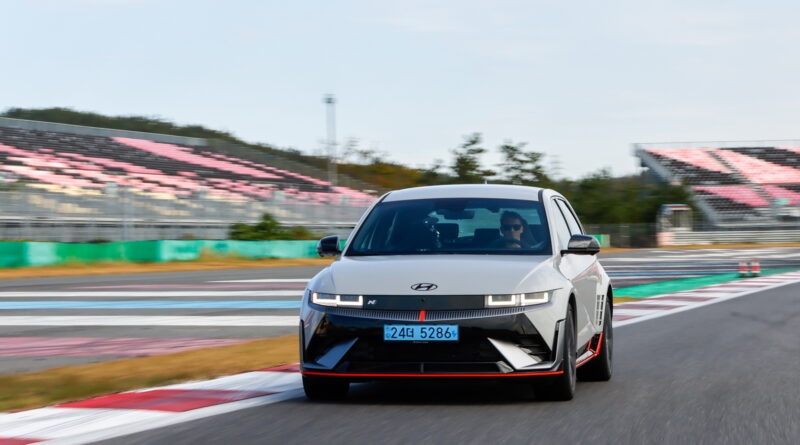2024 Hyundai Ioniq 5 N: road and track review of a Kia EV6 GT and Tesla Model 3 Performance killer
Hyundai’s Ioniq 5 N is here to challenge everything you once thought about electric cars.
Boring, silent, and soulless? No more.
Here’s an EV with driver engagement at its very core, and the first truly convincing offering that could transform petrolheads into electronheads.
Following Hyundai’s triumphant i30N and i20N hot hatches – true segment shakers – the brand wasn’t going to sling an N badge on its Ioniq 5 lightly. It had to conform to the N brand’s three core principles: have racetrack capability, serve as an everyday sportscar and be a Corner Rascal.

I’m happy to report there’s three big ticks awarded.
Much has been achieved through fakery – ‘petrol’ engine note and gear shifts included – but there’s been no reason to hide this. It’s a huge challenge to create a performance EV to tug at the heart strings of enthusiast drivers, but through incredible tech and engineering Hyundai’s cracked it.
We tested the new 448kW/740Nm (!) burbling extrovert on Korean roads and its F1 race track to see if it really can bring emotional involvement to the EV experience.
What does the Hyundai Ioniq 5 N cost and what features do you get?
Just the single Ioniq 5 N model from launch (first deliveries are expected in early 2024), priced at $111,000 plus on-roads, or roughly $120,000 drive-away.
That’s over $10,000 more than a Kia EV6 GT, $26,000 more than Hyundai’s Ioniq 5 AWD Epiq and, for you combustion fans, a chunky $61,800 over what’s asked for the thrill-bringing Hyundai 130N Premium hot hatch.

But as our European correspondent John Carey suggested, it’s less than half the price of a Porsche Taycan GTS ($248,300) and, having track tested both, can confirm the cheaper Hyundai’s a more thrilling track machine.
Only options are a Vision Roof (panoramic glass) costing $2000, and matte paint for $1000. Colour choice is pleasingly varied, with more extrovert Soultronic Orange, Gravity Gold matte and signature N Performance Blue the standouts.
We’ll not know the full specification until just ahead of launch, but these are the knowns:
- 166kW/350Nm front motor
- 282kW/390Nm rear motor
- N Grin Boost mode for 478kW/770Nm (combined) for ten seconds
- 84kWh battery with preconditioning
- Vehicle-To-Load (V2L)
- 21-inch forged aluminium wheels
- Pirelli P-Zero HN 275/35R21 tyres
- N Mask graphic fascia with air curtain and air flap apertures
- Roof mounted rear spoiler
- Rear diffuser
- Lip spoiler
- EV N Luminous Orange body highlights
- Electronic control suspension with continuously variable damping
- 400mm front brake rotors with four-piston calipers
- 360mm rear brake rotors
- Electronic limited slip differential on rear axle
- N e-shift and regenerative control steering wheel paddle shifters
- N Active Sound +
- N Drift Optimiser
- N Pedal
- N Race
- N Brake Regen
- N Torque distribution
- N Launch control
- Lightweight N bucket seats (front)
- Alcantara trim
- Alcantara sports steering wheel
- Knee pads and shin support
- Metal pedals
- Twin 12.3-inch digital screens
- Wired Apple CarPlay/Android Auto
- Wireless phone charging
- Bluelink connected services
- Over-The-Air (OTA) software updates
Positively, and unlike the Ioniq 5 Epiq, no digital side mirrors for this hottest of Ioniqs.
What is powering the Hyundai Ioniq 5 N?
Not only is the Ioniq 5 N the most expensive Hyundai ever, it’s also the most powerful by some margin.
Its twin motors offer 166kW/350Nm up front and 282kW/390Nm at rear, combining for a mighty 448kW/740Nm: it has almost twice the kW of a normal (and not exactly slow) AWD Ioniq 5.
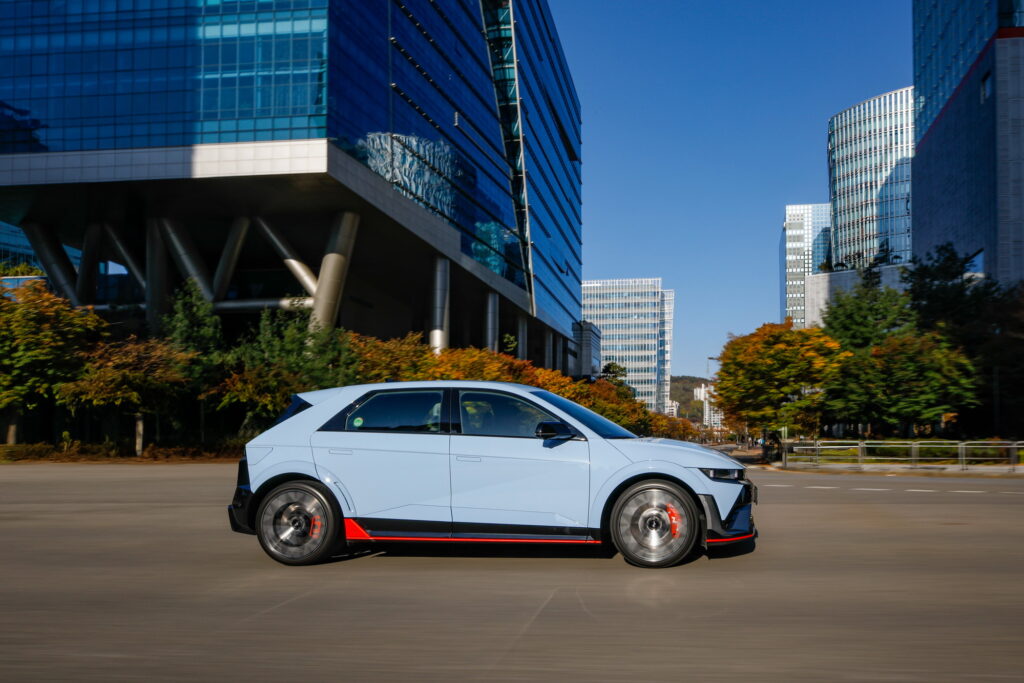
An N Grin Boost (yes, really) mode adds an extra 30kW and 30Nm for a ten second burst, pumping those figures to an unholy 478kW/770Nm combined. Same power, incidentally, as a Porsche 911 Turbo S.
Result is, when engaging launch control, a 0-100km/h time of 3.4 seconds – proper supercar stuff. And for those taking it to tracks with long straights, rest assured it won’t halt until you nudge 260km/h.
A smart cooling system, advanced battery thermal management and an ‘Endurance’ mode – where peak performance is slightly pegged – will extend track time. We’re assured it’ll lap the Nürburgring twice (42km) at sub-8 minute pace without performance loss. Manage that, and you’ll have no complaints coming in to rest the car and your wits.
To deserve its ‘N’ badge and prove itself as race track suitable, engineers ensured the Ioniq 5 N could tackle a 20 minute track session then come in for 20 minutes rapid charging before heading back out again.
This would be typical of most track sessions with a petrol performance car, really. Problem is, for an EV, is getting fast chargers installed at race tracks.
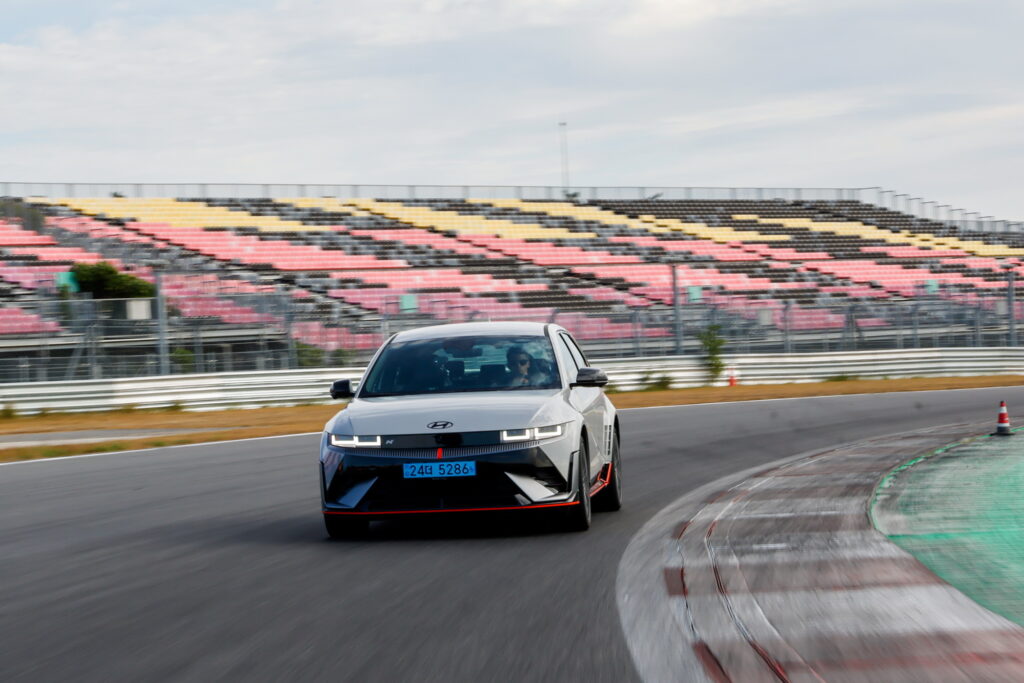
The Ioniq 5 N’s built using 800V architecture, allows for rapid charging. Quoted charge speed is 350kW, but our previous tests suggest under 250kW is more realistic.
Battery is a massive 84kWh unit, and although unconfirmed, Hyundai reckons the WLTP range is 448km.
Hyundai says the Ioniq 5 N will go from 10 to 80 percent charged in just 18 minutes when plugged into an ultra-fast charger.
How practical is the Hyundai Ioniq 5 N?
Very. There’s nothing radical inside to compromise the excellent practicality seen with all Ioniq 5s, and that includes for rear passengers. Yep, a proper family-fit electric performance weapon, plus a hatchback rear offering 527L space.

Its 3000mm wheelbase – longer than a Hyundai Palisade’s – brings excellent legroom for those in the back. These chairs are wide and reclinable, and even with the glass roof there’s ample headroom for six-footers. Middle seat’s firm, but perfectly useable.
Up front, the gear shifter’s steering column mounted, freeing up space for large and deep centre console storage, plus there’s an abundance of USB-C ports.
While there’s wireless phone charging, you must plug-in to use Apple CarPlay or Android Auto. The Ioniq 5 N accepts Over-The-Air updates, so hopefully wireless smartphone mirroring won’t be far away.
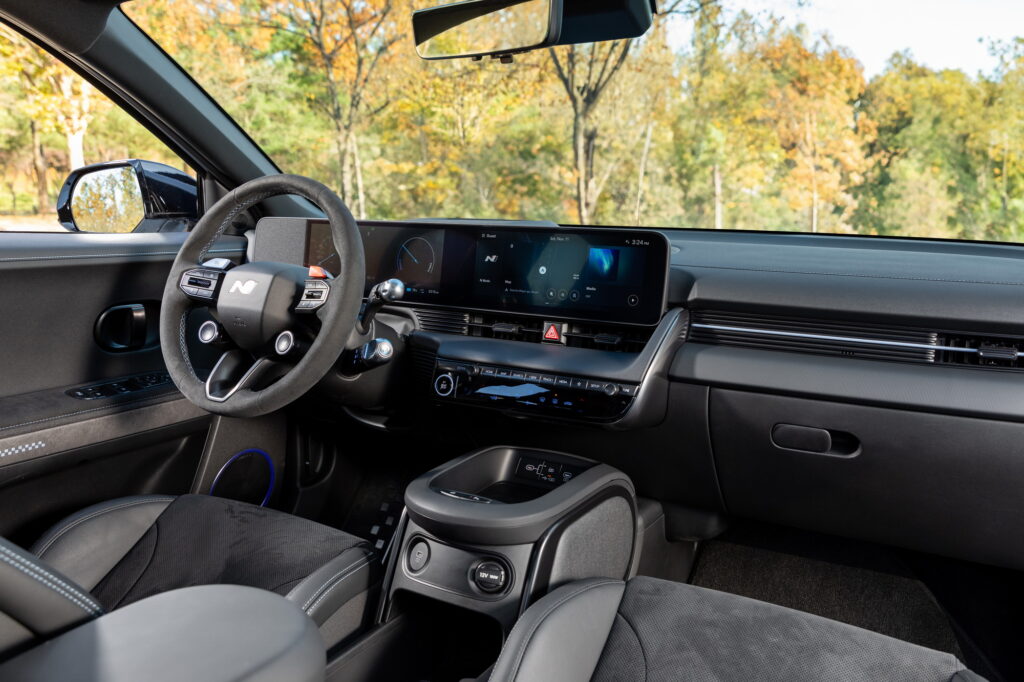
There’s an excellent racy feel for the driver, headlined by an Alcantara-coated steering wheel. Nothing says performance playtime quite like one of these.
Seats pin you low, are proper buckets and are also coated in Alcantara. Same for the door rests, although the too-thin recycled material door cards feel too cheap for this price car. Low down you score knee padding for enthusiastic track outings.
The dash layout’s typical sensible Hyundai, albeit with buttons and menus that require plenty of learning. A brace of 12.3-inch screens look excellent in a single panoramic display, while climate controls are a mix of touch pads and proper physical buttons.
What is the Hyundai Ioniq 5 N like to drive?
It’s an utter riot.
Bloody fast, hugely competent, noisy, and rich with feedback and visceral excitement. Okay, much of it’s synthetically enhanced, but when it delivers such joy you care not a jot.
Eight internal and two external speakers emit a choice of virtual sounds using RPM, speed and torque data. Two of these sounds are futuristic cartoony EV noises, but one – the only one you should use – mimics a four-cylinder turbo petrol with a dash of racecar.
In attack mode, it’s utterly convincing. Lift off the throttle and it’ll give popping backfires too.
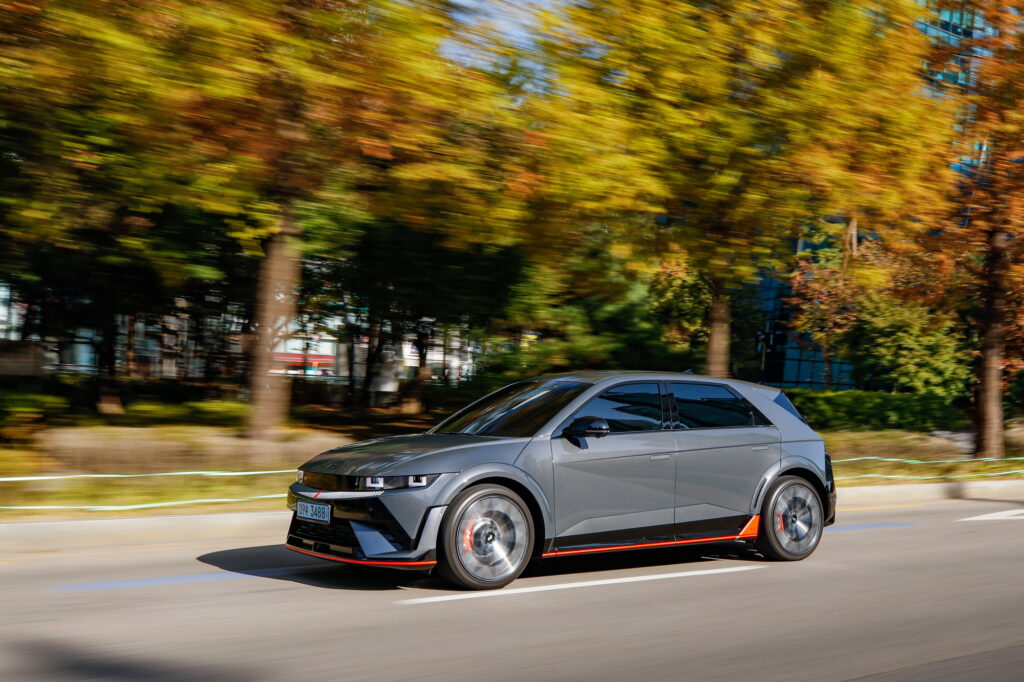
It works in unison with Hyundai’s N e-Shift, there to ape an eight-speed dual clutch transmission.
Steering wheel paddles tap through the pretend cogs, it ‘revs’ to an imaginary 8000rpm, and if you forget to change up it’ll even bounce you off a faux rev limiter. Brake into a corner and engage downshifts and little throttle blips fill your cabin. It’s utterly addictive.
The gear shifts themselves are surprisingly brutal. But in a good way. It feels almost like a racing paddle shift gearbox when you’re in full N mode, your body jolting forward with each eager upshift.
You may read all this in horror believing it to be intolerable fakery. But it just works. It’s involving, engaging and so very cleverly tuned.
Oh, and it’s really damn fast. Like Lamborghini Huracan fast. Throttle response is otherworldly, and rolling acceleration makes it feel even faster than its bonkers 0-100km/h 3.4 seconds time.
An ‘N Pedal’ engages the strongest regenerative braking I’ve ever tested – up to 0.6 G deceleration in maximum strength. On the track, instead of braking into a corner, you simply lift off and the car dives while rapidly slowing, so much so you can manage one-pedal driving while still aiming for lap records.
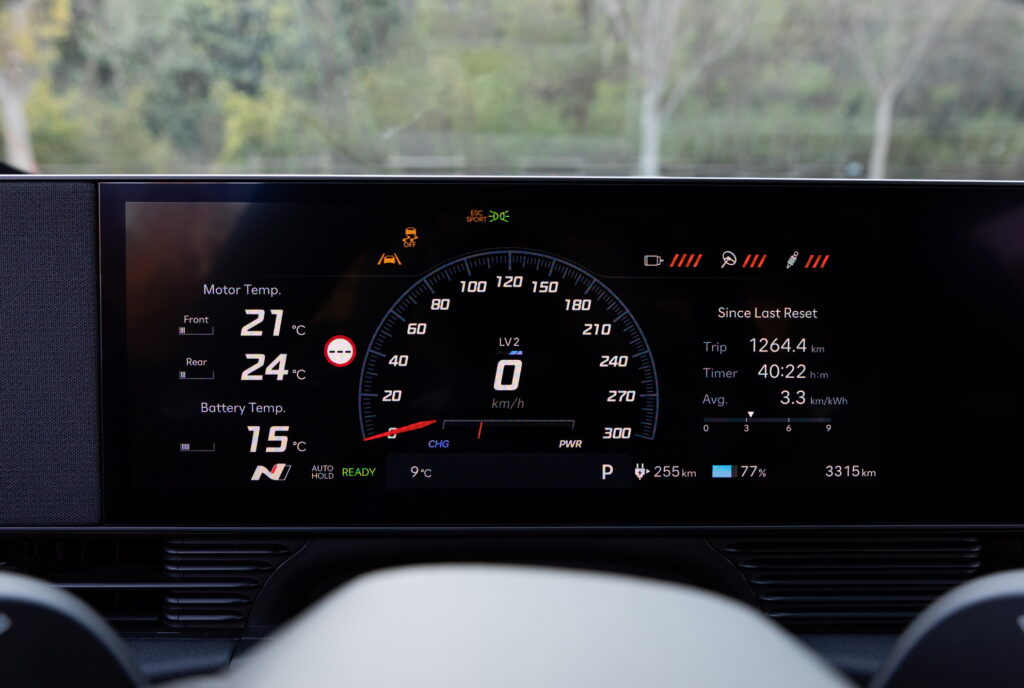
It’s actually neck-draggingly strong, so much so you really must re-train your brain that such deceleration’s coming before you touch the brake pedal. When you do, mighty 400mm front rotors join the anchors party and good grief this thing pulls up in a hurry. There’s even decent brake feel, happily.
There’s more. Through the touchscreen you can send torque to wherever you want and whatever proportion. All to the front? Yep. 50-50? Okay. Full rear-wheel drive with 100 per cent to the back end? All good, mate.
In our (too short) five laps around Korea’s Yeongam Grand Prix circuit, being able to quickly change the complete character of the car – front-drive to full rear-drive – was brain-bending. Turned out I was in the mood for a rear drive car, so locked in 100 per cent to the rear and embraced slidey oversteer for as long as they’d let me.
“The challenge has been making a 2.2-tonne elephant dance,” said Albert Biermann – N’s executive technical adviser and former BMW M Division boss – and they’ve cracked it.
The Ioniq 5 N feels nothing like that mass as it darts into rapid direction changes; there’s a pleasing level of body roll to communicate what’s going on, and the rear end rotates in a predictable, full-feedback way to give incredible confidence to go quick. Really quick. Steering, too, has solid weight in N mode.
There are five different drive modes – Eco, Normal, Sport, N and N1/N2 individual settings. Each alters motor, steering, adjustable suspension, stability control and the electronic LSD to suit, while you can go full custom in the N1/N2 modes to set up exactly how you’d like.
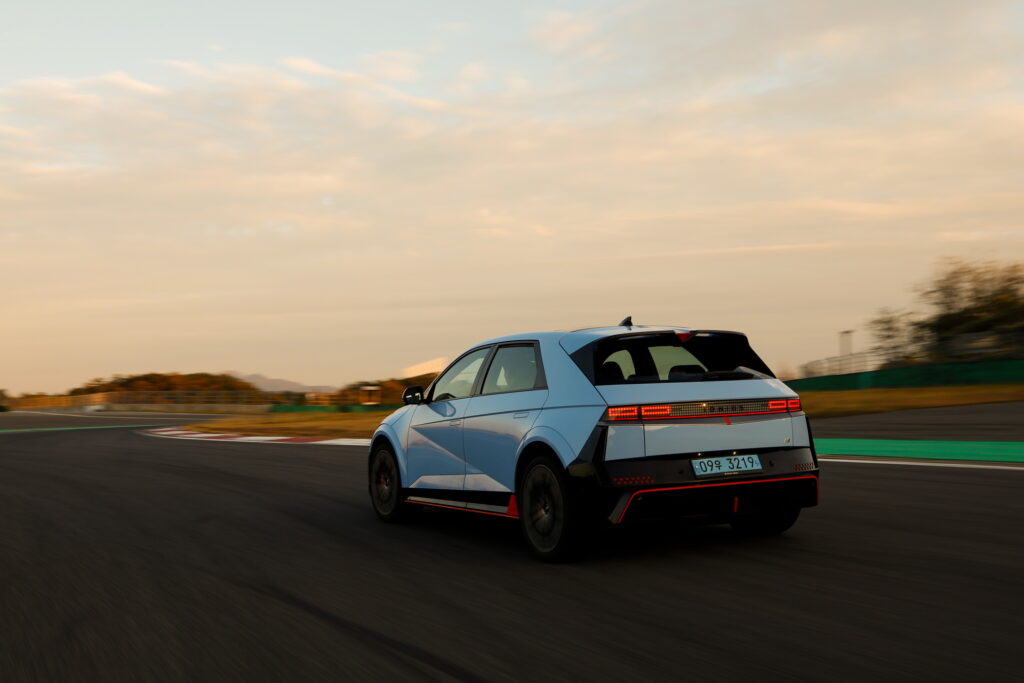
It needs a serious deep dive, and traditionalists who just want to get into a performance car and drive may find it all a bit overwhelming. To get the most out of it, a sim racer’s obsession for customising and tweaking would prove beneficial.
There’s even a Drift Optimiser mode which we sampled with limited success. There’s just so much torque and mass it feels a bridge too far. I’d just concentrate on going quick on a race track.
Besides, with not-cheap 275/35R21 Pirelli P-Zero tyres wrapping 21-inch forged aluminium wheels, I’d be in no rush to burn them up.
So brilliant is it as a track tool, I was concerned its on-road manners would be quite intolerable.
Here’s where the adjustable damping really shines, despite its giant 21-inch rims and skinny tyres.
Road bumps are soaked up with decent competence, with only harsh ones troubling the spine. But after driving the Ioniq 5 N through the city, over back roads and then a 400km highway blast – with four adults on board – it proved easier to live with than any other N car I’ve tested.
Daily driver? No problem. You can sling it in Eco or Normal and pootle along in silence and comfort.
Find a decent back road and you can prod the steering wheel buttons to engage whatever toys you want – engine noise, those faux gear shifts, throttle sensitivity and how firm you want the steering and suspension.
It masks its weight on winding roads too, and can really feel quite small and playful. Okay, not like a Caterham, but there’s less of the cumbersomeness I experienced when getting keen with the Kia EV6 GT or Porsche Taycan GTS.
You just have to watch your speed. When planting it out of corners – revelling in the instant torque smash – that next corner arrives far quicker than your brain first imagines.
What is the Hyundai Ioniq 5 N‘s battery and vehicle warranty?
The Ioniq N is covered by the brand’s five-year, unlimited-kilometre warranty, but the battery and the vehicle’s high-voltage equipment is covered for eight years or 160,000kms.
Hyundai’s excellent initiative for covering non-timed track use applies also.
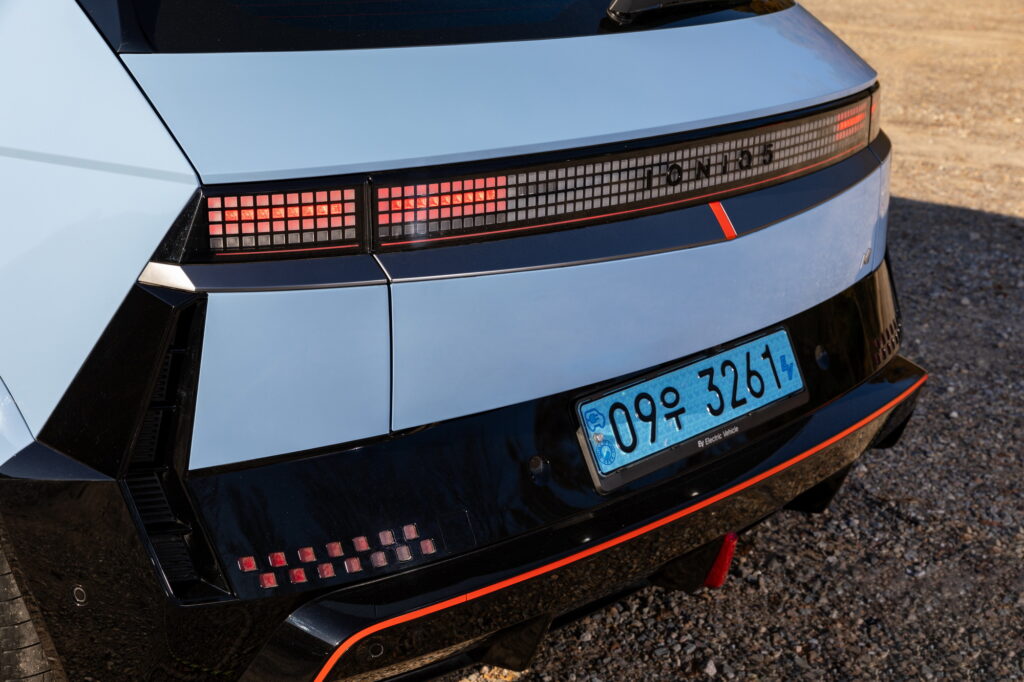
Service costs haven’t yet been revealed, but a normal Ioniq 5 AWD requires serviced every two years or 30,000km. First and third services are $570, while the second is a chunkier $1090. Expect the Ioniq 5 N to cost similar.
The Hyundai Ioniq 5 N verdict:
A benchmark car.
History should note the Ioniq 5 N was the turning point when EVs began convincing petrolheads that there’s life (and fun) after combustion engines.
Engaging, fun, superbly engineered and, once you accept the fakery, an emotionally involving sports car.
The fact it also serves as a practical daily driver thanks to multiple personalities strengthens its appeal further.
Other performance EV brands must surely take note: this is a driver’s car par excellence.
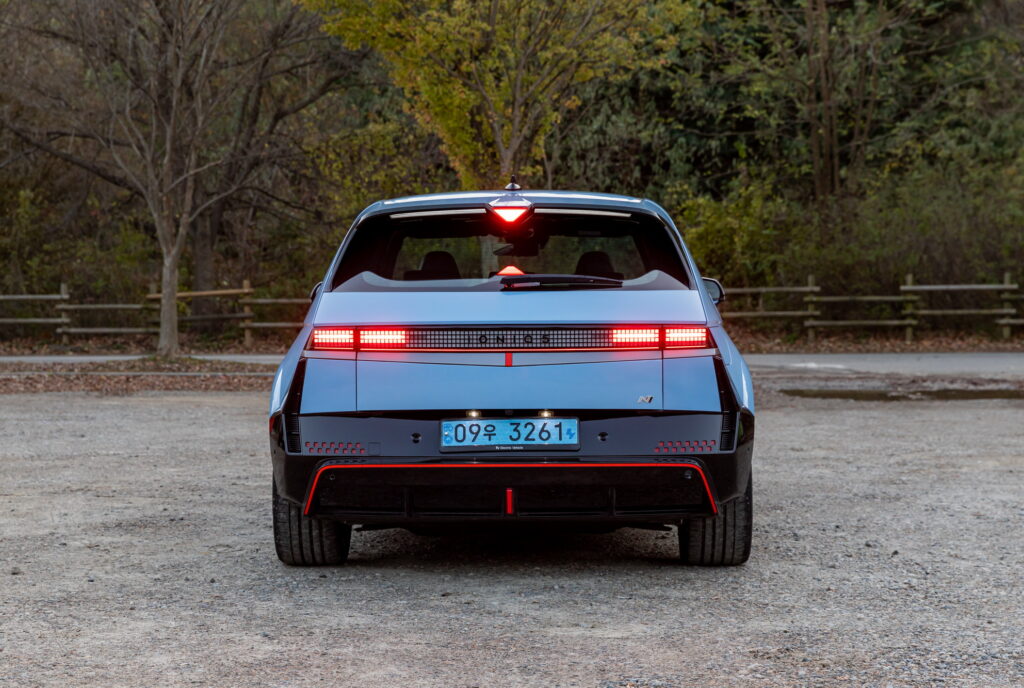
Score 9/10
Hyundai Ioniq 5 N
Price: $111,000 plus on-road costs
Basics: EV, 5 seats, 5 doors, crossover SUV, AWD
Range: 448km estimated (WLTP)
Battery capacity: 84kWh
Battery warranty: 8 years/160,000km
Energy consumption: 18.8kWh/100km (estimated)
Motors: 1 front 166kW/350Nm and 1 rear 282kW/390Nm, total output 448kW/740Nm (boost mode 478kW/770Nm)
AC charging: 10.5kW, Type 2 plug
DC charging: 350kW, CCS combo plug
0-100km/h: 3.4 seconds

